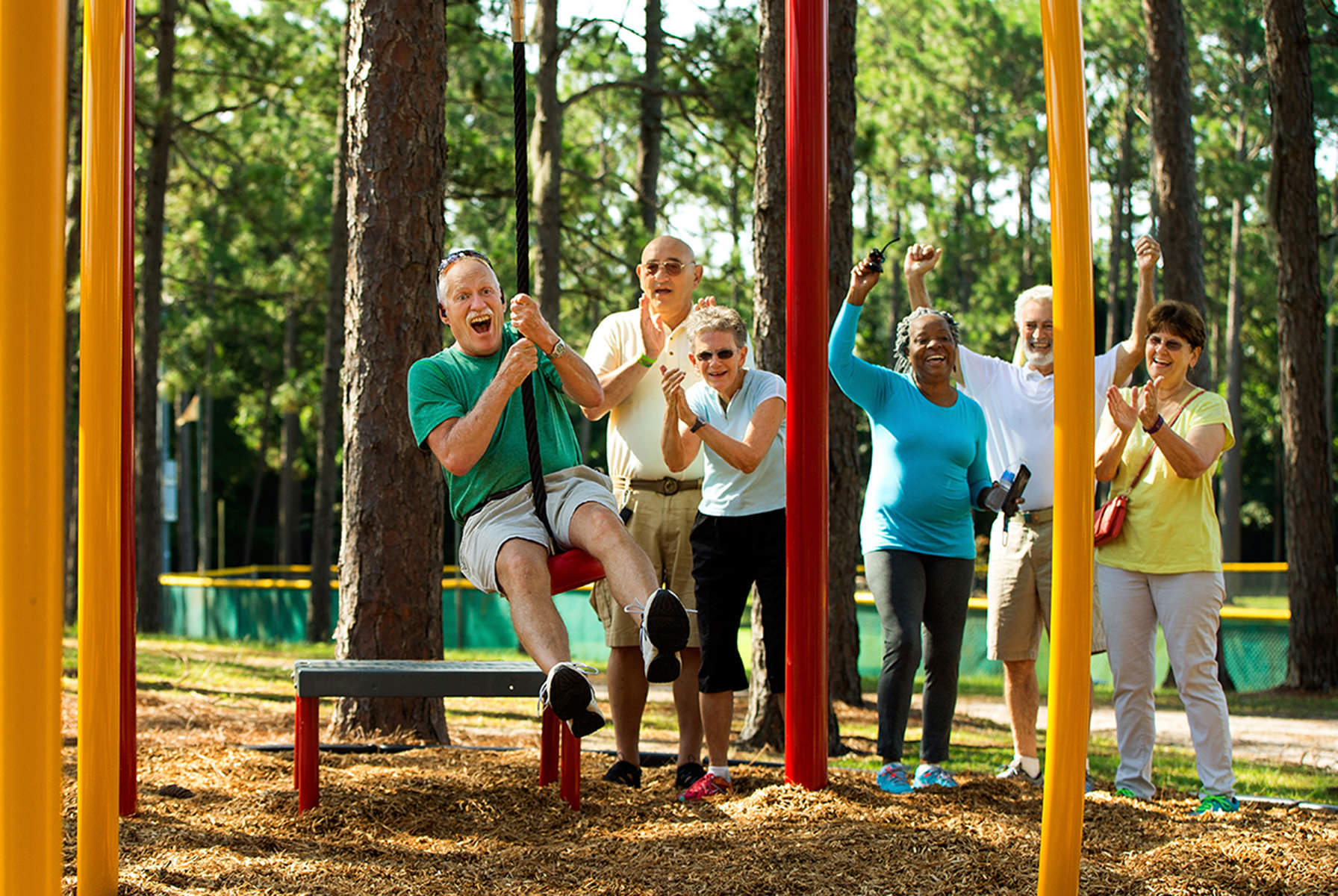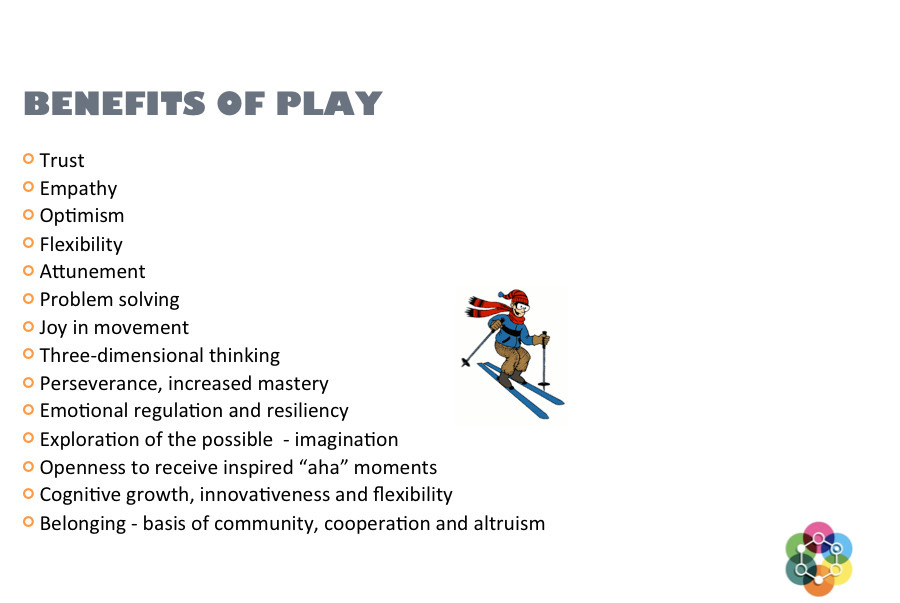Why Play?
Because nature designed us to play.
Because we are built to enjoy its nature-assured benefits, which are manifold and often subtle in their manifestations.
Because nature built us to enjoy the obvious and subtle benefits of play. ( And on close inspection we cannot be fully human and competent without it.)
And because it just happens to be fun!
Think of a world without play.…no belly laughter, or joyful smiles and nonsense baby-talk between babies and mothers, no games, from hide and seek to chess, no light-hearted flirtation, no reason to carve out space for playgrounds, no wagging tail puppies who delight everyone….you get the picture: and then, get serious about it, and look closely and systematically at lives deprived of play, and the dire consequences of its lack become painfully evident.
But there really is more to “getting it” about play than that.
This blog for PlayCore will be examining the “more than that” to our play. By understanding more about play, for you, your children or grandchildren, you will gain fresh vitality. Adults do not need to forsake their responsibilities to enjoy the life-enhancing benefits of play.

A new science of play has emerged from the explosion of information emerging from the social, psychological, behavioral, and biological sciences. For children and adults, play strengthens the mind and the body, straightening the path toward social competency, emotional stability, physical capability, and success.
Play has been traditionally considered applicable primarily to the young for their development of later useful skills, or a means of blowing off excess energy; something separate from work. Always difficult to define and pin down, and not really considered a necessity for adults, it has not received broad research funding, and has thus been a late arrival now happily reinforced and better understood by science. If part of a scientific study, it has in the past been fragmented into serving or confirming a particular emphasis of the investigator. As such it has never before been fully seen or applied as a whole, which now is happening. The synthesis of new and historic information about play, which has recently developed, now takes us beyond the traditionally narrow limitations of how play has traditionally been regarded.
My interests in play have been honed in the following ways. By initially taking a sweeping look at play pathologies, such as bullying, painful isolation, adult hardened rigidities and more, I have been able to see what happens when it is missing in humans. Then, by looking for a broader context in which to place play and playfulness, I moved on to systematically observe animals at play. From seeing its forms and purposes in animal life, and connecting these and other play discoveries with previous studies and practical experiences with human behavior, and reviewing the play of some 6000 varied individuals, a rich play tapestry has unfolded. Along the way, by examining special creative environments, and by linking play practitioners and play theorists, a newly emerging practical very broad cultural synthesis of play, (e.g., for kids, parents, coaches, teachers, playground designers, corporate innovators, etc.) becomes a natural and inevitable outcome from this lifetime review. Follow along in this and future play-focused blog posts and share the “aha” that comes from seeing play as vital, and helping to make play more a priority in your life.
OK, enough of this… But Why Play?
Because play is instinctive; suppressing the instinct to play is harmful. Playlessness makes children and adults more vulnerable to depression, anxiety, impulsivity and sedentarism. However…if we are safe, otherwise healthy and well fed, it bubbles up spontaneously in its wide variety and highly individual patterns, from infancy to old age. It is often, sadly, suppressed.
Parents want the best for their children, of course. But keen parental anxiety over safety and success often leads to overprotectiveness and micromanagement. Parental anxiety is at the root of the mainstream pressure on parents to use parental time well for the “best” outcome for their children; this coming from loving and well-meaning motives, but often resulting in misdirected emphasis, creating the parents’ or care-takers’ need to orchestrate the behavior of the child for performance that they feel is necessary, or was necessary, for them in their life. This is often done without full awareness of what that child spontaneously finds naturally gleeful. This can staunch the deep intrinsic motivation that drives the play instinct, grants the many benefits from play, and which otherwise would craft natural play patterns. And so, not understanding its centrality to sparking and achieving wholeness, its readiness to open the brain, body and spirit, its many benefits are missed.

This list is not comprehensive, but it frames many direct and, for most of us, unsuspected payoffs from a play-adequate life.
We will elaborate on these elements in future blogs, but for starters consider the benefits TRUST and ATTUNEMENT. This begins early. The bonding between mother and infant combines parental love, and what emerges is the mutual joy from being nurtured and nurturing. This is hard-wired into the nervous systems of both, and the baby-talk and smiles that are exchanged are embedded in play-promoted trust that nature has established. In late adulthood, for example, seeing an old friend you have not seen for some time, who has been deeply trusted, evokes a surge of happiness from the encounter, showing that this benefit of play (you and the friend often played together) continues throughout your lifetime, waiting to be experienced again and again. The benefits of play are not short-lived.
In future blogs we will look closely at other benefits and dividends of play.
- Flexibility and problem solving
- Optimism and deep engagement
- 3-dimensional thinking and joy in movement
- Perseverance and resiliency
- Exploration and enjoyment of novelty
- Cognitive growth
- Belonging and establishing community
- Animal play and its relation to human play patterns
Our heritage as humans is to…play.
Yes, we are built to play, and built by play.



